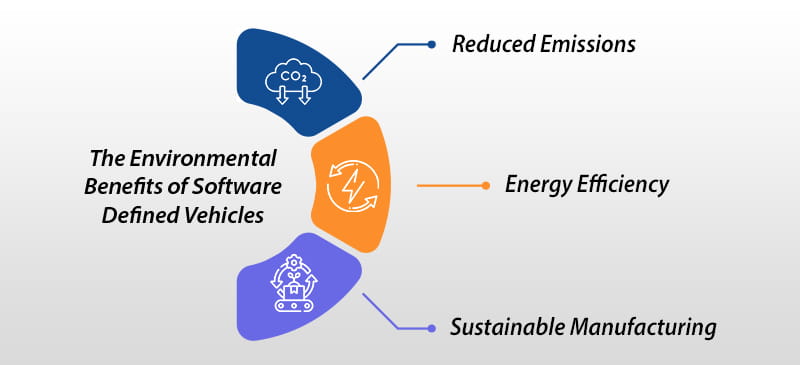Driving Towards NET ZERO: Exploring Sustainability with Electric Software Defined Vehicle (e-SDV) in Automotive Industry
In an era defined by environmental consciousness and technological innovation, automotive industry is at a crossroads. Need for sustainable transportation solutions has never been more pressing, and one promising avenue is Battery Electric Vehicle (BEV) coupled with Software Defined Vehicles (SDV).
According to Markets and Markets recent report, the global software defined vehicle market is projected to register a significant 9.1% CAGR during the forecast period of 2022 to 2028. The report states that the market shall grow from $270.9 billion in 2023 to $419.7 billion in 2028.
The staggering growth of the market is attributed to paradigm shift of the automotive industry towards environmental sustainability and net zero. Additionally, sustainable development goals such as carbon neutral environment, eco-friendly products, and zero emission vehicles are some more factors that are driving the growth of global software defined vehicle market.
Rise of Software Defined Vehicles (SDVs)
Software-Defined Vehicles, or SDVs for short, represent a paradigm shift in the automotive industry. These vehicles are characterized by their heavy reliance on software for various aspects of operation, control, and performance optimization. SDVs are often associated with electric and autonomous vehicles, making them a crucial component of the sustainable transportation landscape.
Sustainable Mobility at Its Core
Primary advantage of SDVs is their potential to significantly reduce carbon emissions. Electric SDVs are paving the way for a more sustainable future by replacing traditional internal combustion engines with efficient electric powertrains. This transition can dramatically reduce greenhouse gas emissions and contribute to cleaner air quality.
Since now we know that what SDVs are, let’s look at some of the benefits of software defined vehicles.

The Environmental Benefits of Software Defined Vehicles
Reduced Emissions
Electric SDVs produce zero tailpipe emissions, which is a monumental step forward in reducing the carbon footprint of transportation. As we shift towards renewable energy sources, the environmental benefits of electric SDVs become even more apparent.
Energy Efficiency
SDVs are designed with energy efficiency in mind. Advanced software algorithms optimize power usage, resulting in longer driving ranges and reduced energy consumption. This means fewer charging cycles and less strain on our energy infrastructure.
Sustainable Manufacturing
The shift towards SDVs has also impacted the manufacturing process. Sustainable materials, such as recycled plastics and lightweight composites, are increasingly being used in the construction of these vehicles. This reduces the overall environmental impact of vehicle production.
To know how more on SDVs can propel sustainability for your automotive business, connect with us
Autonomous Driving and Sustainability
Reducing Traffic Congestion
Autonomous SDVs have the potential to revolutionize urban mobility. By reducing traffic congestion through optimized routes and smoother traffic flow, these vehicles can help decrease fuel consumption and emissions, contributing to a more sustainable urban environment.
Carpooling and Shared Mobility
SDVs can facilitate the growth of carpooling and shared mobility services. This means fewer vehicles on the road, less parking demand, and a reduced need for personal vehicle ownership, all of which can reduce the environmental impact of transportation.
Challenges on the Road to Sustainability
While the potential for software-defined vehicles to drive us towards a greener future is undeniable, several challenges must be addressed.
Infrastructure Development
To fully realize the benefits of SDVs, we need to invest in the necessary infrastructure, such as charging stations for electric vehicles and advanced traffic management systems. These investments are crucial to support the transition to a sustainable transportation ecosystem.
Data Security and Privacy
With the increasing reliance on software and connectivity, data security and privacy concerns must be addressed. Robust cybersecurity measures are essential to protect vehicle systems from potential threats.
Regulatory Frameworks
The development and deployment of SDVs require clear and comprehensive regulatory frameworks. Governments and industry stakeholders must work together to establish guidelines that ensure safety, accountability, and sustainability.
Conclusion
In conclusion, software-defined vehicles hold immense promise in driving us towards a greener and more sustainable future. From electric powertrains to autonomous capabilities, SDVs are poised to transform the way we think about transportation. However, to fully realize their potential, we must address the challenges and pave the way for a future where our vehicles are not just modes of transportation but also stewards of the environment.
To know how more on SDVs can propel sustainability for your automotive business, connect with us